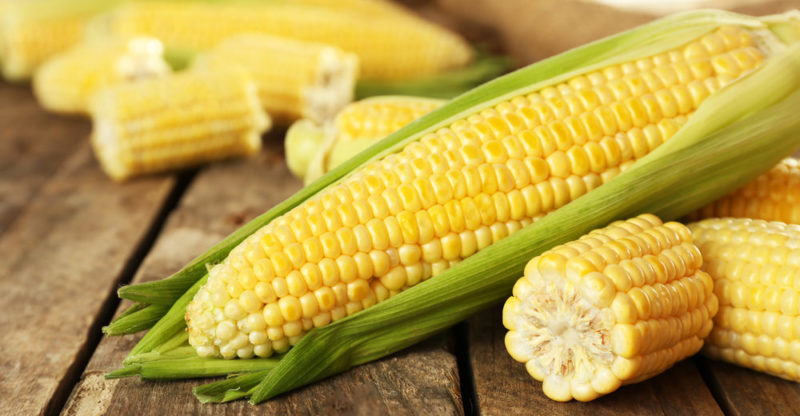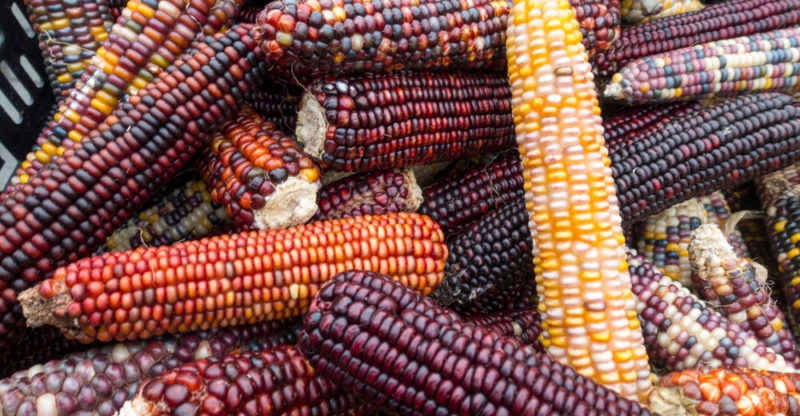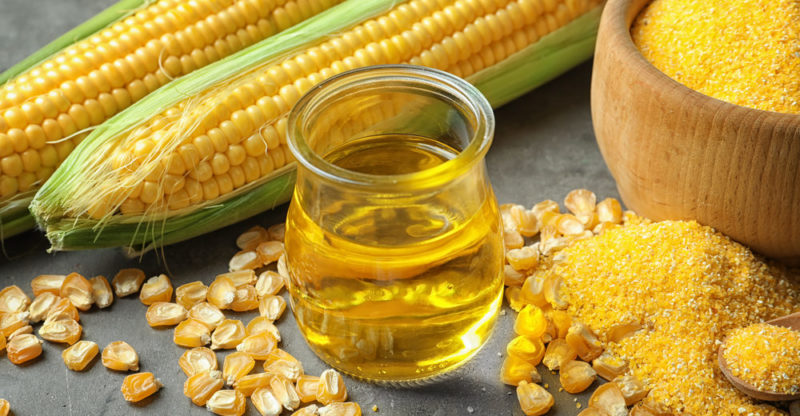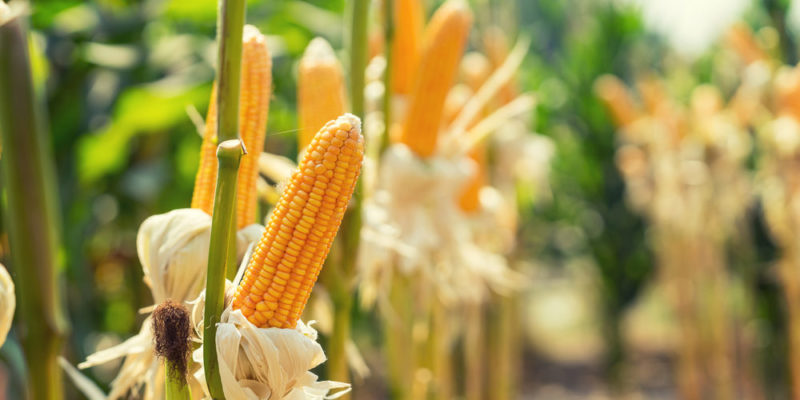We explain what corn is, the history of this plant and what its structure is like. Also, what are its general characteristics, uses and cultivation..
What is corn?

Corn or zea mays is a cereal, an American grass plant , characterized by having long and solid stems (and not hollow like its closest relatives) at the end of which are spikes or ears (female inflorescences), with their seeds or grains of corn arranged along its axis.
Also called corn (or corn) to these ears and even to their grains once extracted.
It is an extremely popular food source , especially in the American continent , which is usually ground to make flours (and prepare various dishes with them, from arepas to tortillas).
It is also used as animal feed and as an input for obtaining biofuels.
Its name comes from the Taino word mahís , which literally translates “what sustains life”.
Corn history
Corn is native to the American continent .
It was cultivated for the first time by the original peoples of the Mexican Neovolcanic Axis (Tehuacán) approximately 10,000 years ago .
The Olmecs and the Mayans also used it.
Around 2,500 years ago it spread throughout the entire continent , becoming the key food of the different pre-Columbian cultures.
In addition, it supported a trade network based on its varieties and its surpluses.
After the arrival of the European conquerors, corn reached Europe and was thus introduced to other regions of the world , since it is a species capable of tolerating different climates .
Parts of the corn plant

The corn plant belongs to the Poaceae or grass family , with an annual cycle and resistant and erect stems, which can reach eight feet in height.
Various internodes appear along the stem , from which the leaves sprout.
This plant is made up of:
- Estate: It has two types of roots: the primary and fibrous that go underground, and the adventitious that sprout from the first node of the plant and are superficial. Both allow the long stem to stand upright.
- Stem: In turn, it is made up of three layers: an impermeable and transparent epidermis, a plant wall through which the sap circulates, and a pith of spongy, white tissue where sugars are stored .
- Leaves: Generally lanceolate, long and thin, reaching 120 centimeters in length and 9 centimeters in width.
- Inflorescences: These are the "flowers" of the plant, different according to its sex:
- Male: Called panicle, panicle, spike or miahuatl , they consist of a central axis and lateral branches, where little flowers that have three stamens each one sprout, where the necessary pollen is produced to fertilize the females.
- Female: Called ears, they are cylindrical spikes endowed with flowers in parallel rows, provided with ovaries in which the pollen germinates, thus producing seeds or grains that, when ripe, acquire a bulbous texture and uniform color, being edible.
Grain of corn
Each grain of corn on an ear is a totally independent fruit , inserted in a cylindrical axis or rachis, known as cob.These grains are called caryopsis and can vary in number and dimensions, depending on the species, growing in rows along the ear.
Its standard color once it reaches maturity ranges from white to yellow , and may also be purplish or red in some species.
Corn varieties
 There are numerous species of corn, of which the following stand out:
There are numerous species of corn, of which the following stand out:
- Sweet corn: Used for gastronomic purposes due to its high sugar content.
- Corn flour: Its starch content makes it very soft and ideal for milling and making flour.
- Hard bark corn: American variety of extremely hard grains.
- Busting corn: Of regular grains, suitable for making popcorn (popcorn, cotufa, etc.) by subjecting them to dry cooking.
- Red corn: Purple in color, it is endemic to Peru and is used to make chicha.
Cornmeal
Through the drying and grinding of the corn kernels extracted from their ears , it is possible to obtain a fine flour, different from starch.It constitutes a fundamental input in Latin American gastronomy (especially in Venezuela , Mexico , Peru, Ecuador , Colombia and Paraguay ).
This flour can be obtained by many methods, the oldest being nixtamalization: cooking the grains in water and lime to obtain a nixtamal that, when ground, gives rise to the flour.
This technique comes from the ancient Mesoamerican peoples .
Dishes made from corn
 Some of the best known corn food products are:
Some of the best known corn food products are:
- Arepas or tostadas: Fundamental in the Venezuelan and Colombian diet, they consist of round corn flour dough buns, which are eaten roasted or fried in the company of various fillings.
- Cachapas or drips: Typical of Colombia, Costa Rica and Venezuela, and with a strong presence in the Canary Islands due to the exchange with the latter nation, it consists of a kind of pancake made of corn flour and young corn grains, eggs, salt , sugar and a pinch of wheat flour, eaten filled with white cheese, curd, custard.
- Tortillas: In Mexico and Central America , corn flour tortillas are made that are then fried, roasted or served with different content, depending on the dish: tacos, quesadillas, tostadas, flutes, etc.
- Pozole: In Mexico and Central America, it is a broth made from corn grains, to which chicken or pork meat, avocado and other ingredients are added.
- Paraguayan soup: Typical of Paraguay, the Brazilian southwest and the Argentine northeast, it is the only solid soup in the world: a spongy and salty sponge cake made from corn flour, along with onion, coarse salt, eggs, fresh cheese, pork fat and other ingredients.
- Polenta: Very popular in Mediterranean Europe, as well as in the South American cone, it is a food made from boiled corn flour (or other flours, such as chestnuts or buckwheat), and is used as a base or thick dough to accompany, solid or liquid , with sauces and other ingredients.
Why is corn important?
Corn is a central food in many cultures , especially in the Americas, and has been key in the fight against hunger in the world since its export to Europe and other continents.In Africa it has been accepted to such a degree that many countries already consider it part of their typical gastronomy , since it is a very noble plant that occurs in different climates and soils .
Industrial uses of corn
 Beyond its culinary use, corn can be used as feed for livestock , especially pigs and poultry.
Beyond its culinary use, corn can be used as feed for livestock , especially pigs and poultry.In addition, it can serve as a raw material for various industries , such as oil, beer , starches or even as an anaerobic decomposition material, to obtain biofuels such as biodiesel.
With corn oils, the industry of glycerin (and therefore soap), plastic substitutes for rubber, and other inputs necessary for dyeing in the textile industry, cosmetics and even fireworks (dextrin) is developed.
Corn crop
 Despite being native to America, corn has an enormous adaptive capacity , which allows it to be cultivated today in both Europe and Asia .
Despite being native to America, corn has an enormous adaptive capacity , which allows it to be cultivated today in both Europe and Asia .Its cultivation is common to practically all the American nations , constituting together with beans, squash and chili an important part of the diverse gastronomies of the continent .
Its sowing is quite simple , and under natural conditions the spikes generate new plants that compete strongly with each other, so there is a belief that corn is self-generated without the need for human intervention.
The world's largest corn consumers are Mexico, Guatemala , South Africa, Zimbabwe, Zambia, Lesotho, Malawi, Venezuela, and Colombia.
Genetic modifications of corn
Given its ease of cultivation and its high nutritional value, corn is a mass-produced food that requires protection from pests such as fungi and insects .For this , the genome of several species of maize has been intervened (it has 10 pairs of chromosomes , the information of which was sequenced in 2005) to make them more resistant to glyphosate used as a herbicide.
In addition, genetic changes allow them to naturally generate proteins from the bacterium Bacilus thuringensis that serve as natural pesticides. Even some strains have been altered to withstand droughts .
She has pursued her studies in The United States, where she has graduated in Business and Economics and is currently finishing her Master studies in International Economics and Finance. Miss. Amputee is fluent in three languages: English, Spanish and Russian and has elementary knowledge of French and Italian. She love exploring how Collaborative Research Group can become the best tool to achieve the (necessary) educational change. .
Leave a reply
Your email address will not be published. Required fields are marked *Recent post

Sport: What Is It, Types, Risks, Features, Characteristics and Examples

Dogs: Emergence, Features, Characteristics, Feeding and Breeds

Story: Definition, Elements, Structure, Features and Characteristics

